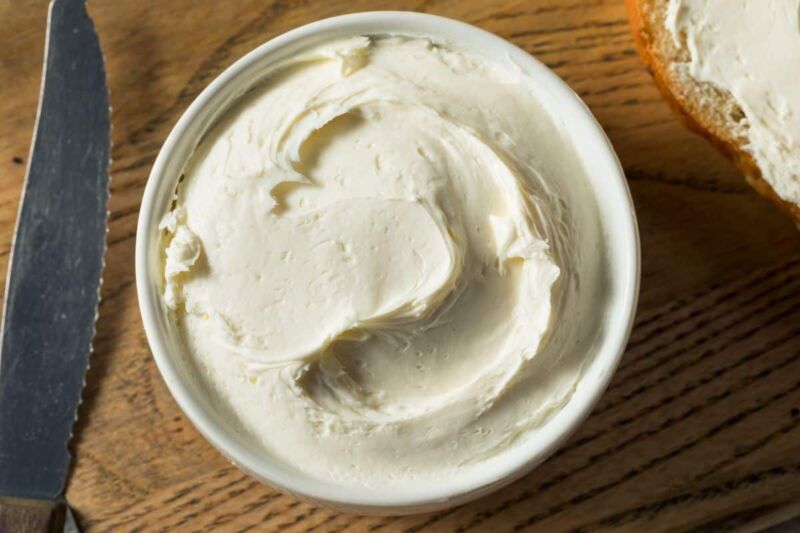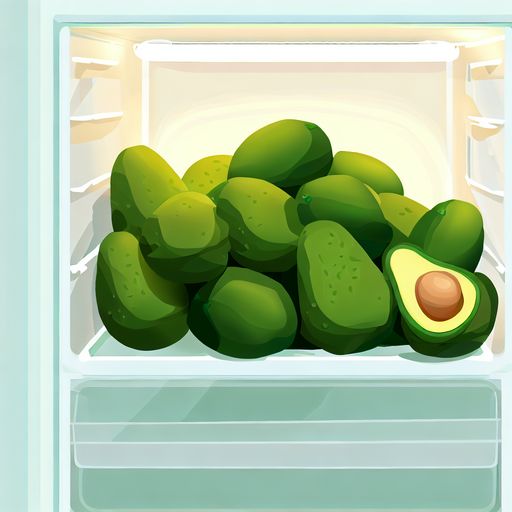What Does Bad Cream Cheese Taste Like?
Have you ever taken a bite of cream cheese only to immediately spit it out in disgust? I certainly have. As someone who enjoys cream cheese on my morning bagel, discovering that a tub has gone bad is a huge letdown. But what does bad cream cheese actually taste like?
Cream cheese is a versatile soft cheese made from milk and cream. It’s tangy, creamy, and delicious when fresh. But once it starts to spoil, the taste and texture quickly deteriorate. Bad cream cheese has a distinct sour, bitter, and sharp taste that signals it is past its prime.
In this article, I’ll cover everything you need to know about identifying, causes, dangers, storing, and preventing bad cream cheese. Let’s dive in!
How to Identify Bad Cream Cheese
It’s important to rely on all your senses—not just taste—to determine if cream cheese has gone bad. Here are the main signs of spoiled cream cheese:
Appearance:
- Mold – Mold growth, usually in spots or patches, is a clear sign to discard the cream cheese.
- Liquid – Separation of liquids from the solids indicates spoilage.
- Separation – Syneresis is the separation of whey. It causes watery pockets in the cheese.
- Unnatural colors – Odd colors like blue, red, or green are a red flag.
Smell:
- Sour – A sour, acidic smell means the cream cheese is past its prime.
- Unpleasant – Any unpleasant or “off” odors indicate spoilage.
Taste:
- Sharp – Spoiled cream cheese often has a sharp, unpleasant taste.
- Tangy – Increased tanginess can signal it has turned.
- Bitter – A distinct bitter taste is a warning sign to not eat it.
Texture:
- Grainy – Small gritty bits or a grainy texture are a bad sign.
- Mushy – A watery, mushy consistency indicates the proteins have broken down.
- Watery – Excess liquid or a separation of whey makes it unappetizing.
So in summary, if your cream cheese shows any signs of mold, odd appearance, rancid smell, increased tanginess, bitterness, or deteriorated texture, it’s best to play it safe and throw it out.
Causes of Bad Cream Cheese
There are several common reasons why perfectly good cream cheese can go bad:
Expired – Like any perishable food, cream cheese has a limited shelf life. An unopened package will typically last around 1-2 months past the printed “best by” date. But once opened, it should be used within 1-2 weeks. If stored properly, it can sometimes last a bit longer. But the taste, texture, and safety rapidly decline after the expiration date.
Improper storage – Cream cheese must be stored at the proper temperature and conditions to prevent spoilage. It should be kept refrigerated at 40°F or below. Higher refrigerator temperatures can shorten its shelf life. Properly sealing the package after opening is also critical to prevent air exposure.
Contaminated ingredients – Issues during manufacturing, such as contaminated milk or cream, can lead to early spoilage. Poor sanitation practices may also introduce harmful bacteria.
Poor packaging – If packaging fails to protect the cheese from air, light, or temperature fluctuations, it will degrade faster. Proper packaging is essential for maintaining freshness.
The main takeaway is that cream cheese easily spoils without vigilance in checking expiration dates, storage, and handling. Keeping your refrigerator temperature consistent and sealing it properly gives you the best shot at fresh cream cheese that lasts.
Dangers of Eating Bad Cream Cheese
Consuming spoiled, old cream cheese isn’t just gross—it’s potentially hazardous to your health. Here are some risks of eating bad cream cheese:
- Food poisoning – Harmful bacteria like E. coli, Salmonella, and Listeria can grow in spoiled dairy. Consuming them can cause foodborne illness.
- Nausea, vomiting, diarrhea – Common symptoms of food poisoning are digestive upset like nausea, vomiting, stomach cramps, and diarrhea.
- Abdominal pain, cramps – The stomach pains, cramping, and digestive distress can be quite severe.
- Headache, dizziness – Food poisoning often causes headaches, dizziness, weakness, and fatigue.
- Dehydration, electrolyte imbalance – Frequent vomiting and diarrhea can lead to dangerous dehydration and electrolyte deficiencies.
The bottom line? Eating spoiled cream cheese, even just a taste, is never worth the risk. While it may look fine at first glance, the bacteria that causes illness can be odorless and invisible. When in doubt, throw it out. Don’t take chances with your health.
How to Store Cream Cheese Properly
Storing cream cheese correctly is the best way to maximize its shelf life and avoid premature spoilage. Here are some tips for keeping cream cheese fresh:
- Store in the original packaging until first use to prevent drying out. Don’t stockpile open boxes in the fridge.
- Once opened, transfer to an airtight container to block oxygen exposure. Mason jars or food storage containers work well.
- Maintain a consistent refrigerator temperature around 35-40°F. Temperature fluctuations shorten shelf life.
- Label the container with the date opened or expiration date. This helps you keep track.
- Use opened cream cheese within 1-2 weeks for the best quality and food safety. Freeze extras if you won’t use it in time.
Proper storage gives you the best shot at keeping cream cheese fresh and stopping it from going bad prematurely. Be vigilant about temperatures, sealing, dates, and signs of spoilage.
What to Do with Bad Cream Cheese
So what should you do if your cream cheese does show signs of spoilage? Here are some tips:
- Discard it immediately – At the first sign of mold, off smells, or odd texture, throw it straight in the trash. Don’t take risks testing it.
- Do not taste questionable cream cheese – Dispose of it based on appearance or smell alone. Never sample it to check if you’re unsure.
- When in doubt, throw it out – Don’t chance it. It’s just not worth getting sick over.
- Do not use it in cooking or baking – Heat does not destroy dangerous bacteria that can still make you ill.
I know it stings to throw away an expensive block of cream cheese. But consuming bad cream cheese can have much more costly effects on your health. It’s always better to be safe and start fresh with a new package.
How to Prevent Bad Cream Cheese
Stop cream cheese spoilage before it starts with these proactive tips:
- Check expiration dates at the store and again when you get home to ensure the longest possible shelf life.
- Properly store after opening by transferring to an airtight container and labeling date opened.
- Purchase small quantities if you don’t use it often to avoid waste from spoilage.
- Avoid temperature fluctuations by maintaining consistent fridge temps around 40°F.
- Monitor for any signs of spoilage like smell, taste, texture, and appearance changes. Discard at the first hint of a problem.
Being vigilant from selection and storage to usage and monitoring for spoilage will help ward off premature souring. With proper handling, your cream cheese should stay fresh long enough to enjoy every last schmear.
Conclusion
I hope this article gave you a thorough understanding of what does bad cream cheese taste like, from the distinct sour and bitter taste to dangerous health risks. Knowing how to identify, store, and prevent spoiled cream cheese will help you avoid ruining your favorite recipes or risking foodborne illness. Trust your senses, adhere to expiration dates, and take care to store cream cheese properly. With a few simple precautions, you can have the satisfaction of fresh, creamy cream cheese from first bite to last.






